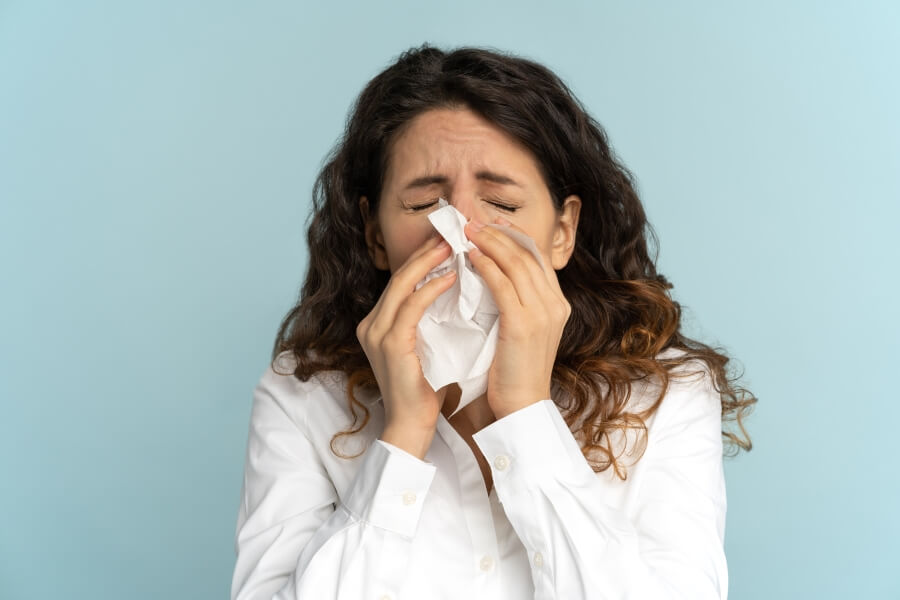As a respiratory virus, COVID-19 shares a lot in common with other viruses that cause respiratory symptoms. As with many respiratory viruses, a sinus infection may follow. With testing centers across the country experiencing very long lines and delayed diagnoses, many are left wondering what they may be experiencing. Symptoms of a COVID-19 infection can be similar to a sinus infection; however, there are ways to tell the difference.
Hallmark symptoms of COVID
COVID-19 is a rapidly evolving virus. As of the writing of this blog, omicron is the dominant variant, but we have also seen others like Delta, and each has its own predominant symptoms. Symptoms often include dry cough, chills, fever, body aches, muscle pain, shortness of breath, nasal congestion, and loss of smell and taste.
What is a sinus infection? And what are the symptoms?
A sinus infection, also known as sinusitis, can follow a cold, the flu, or yes, even a COVID-19 infection. The sinuses are located around the face in various areas. Symptoms of a sinus infection include nasal discharge, postnasal drip, nasal congestion, headache, cough, bad breath, and fatigue.
How to tell the difference between symptoms in common
Headache: As stated above, headaches can be a symptom of a COVID-19 infection and a sinus infection. How can you tell the difference? Sinus infections often cause headaches and facial pressure that is often felt around the area of one of the sinus cavities. The areas include the bridge of the nose, the forehead directly above the nose, or around the temples. You will often feel a full feeling in that area, with lots of pressure, causing a headache. You may also feel this headache extending pressure to your eyes or even downwards, affecting your teeth.
Loss of smell: The loss of the sense of smell is a frustrating experience that both COVID-19 and sinus infections can have in common. From what doctors are seeing, the loss of sense of smell after COVID-19 is often longer-lasting and more severe (i.e., a complete loss of smell) compared to what is experienced with a sinus infection. However, the Omicron variant does not seem to have a loss of smell as a major symptom.
Cough: Both a Covid-19 and sinus infection can produce a cough. Coughs experienced with the coronavirus tend to be dry coughs (meaning they don’t produce any mucus), while coughs associated with a sinus infection are wet coughs.
When in doubt
If you are unsure where the symptoms you’re experiencing originate from, the first step is to get COVID-19 testing done at a COVID-19 testing center or with an at-home test. Keep in mind that rapid tests and at-home tests are more likely to give false negatives if taken too soon after symptoms start, so opt for a PCR test if possible for best results, and retest 4-5 days after symptoms started if you are having COVID-19 symptoms but tested negative.
It’s also important to check whether or not testing is required for work or school purposes, and testing is helpful regardless in order to let close contacts know about possible exposure risks.




